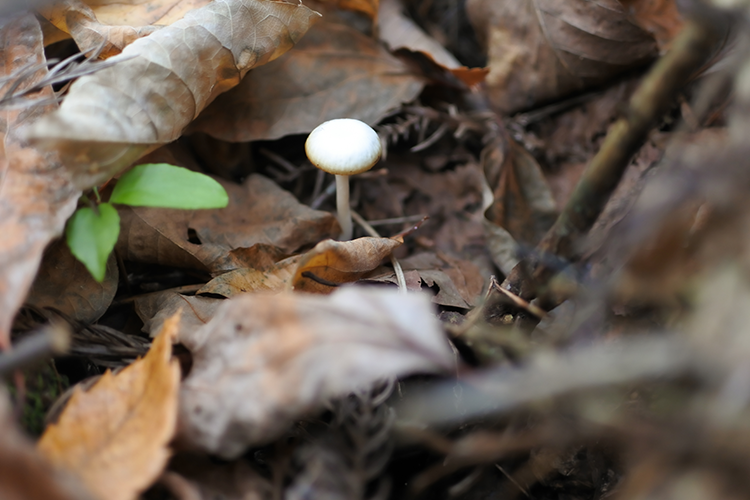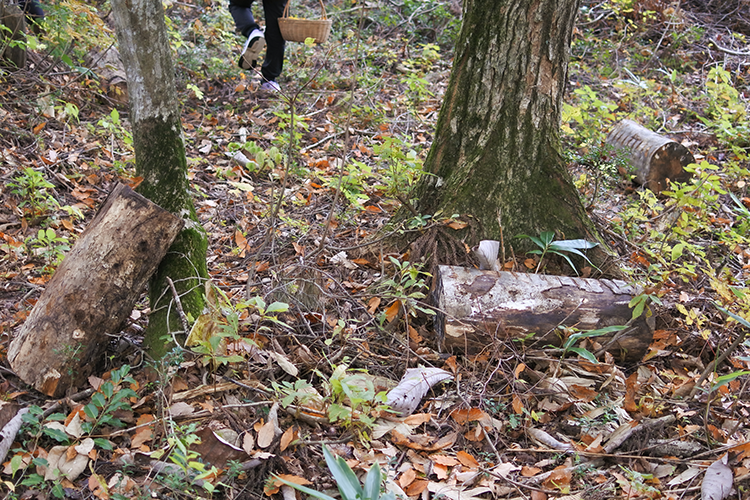ReservationSearch and reserve rooms
Click here to confirm, change or cancel your reservation
Shinkansen accommodation plan
提携法人専用予約
2024.06.15
Go with a natural food hunter. A journey to find the unique flavors of Gujo

Gujo City in Gifu Prefecture is a place rich in nature. Located along the Nagara River, it has the second largest forest area in Gifu Prefecture after Takayama City, and forestry is thriving. The city is also home to the Gifu Prefectural Academy of Forest Culture, which teaches forestry as an academic subject. In this naturally rich place, we went mushroom hunting in the forests of Gujo with Junpei Mizukami of Tabi Factory, who works as a woodworker and also works as a "natural food hunter" who collects mushrooms and deer.
There are many mysteries surrounding familiar mushrooms

Junpei Mizukami, a natural food hunter, will guide you on a mushroom hunt in Gujo.
Mizukami works as a wild food hunter, harvesting produce so that Gujo's ingredients can be enjoyed in local restaurants, and also serves as a guide to allow the general public to enjoy mushroom hunting.
Mushrooms are believed to have existed on Earth 150 to 200 million years ago, and it is said that humans who first appeared about 200,000 years ago saw almost the same kinds of mushrooms as we do today. There are about 5,000 kinds of mushrooms in Japan alone, of which about 100 are edible. Of these, 50 to 60 are delicious. The remaining 150 are poisonous mushrooms that are inedible. The remaining 4,000 or more kinds are mushrooms that may be edible, but we don't know much about them.
"When you find a mushroom, the first thing to do is observe its surroundings. You can narrow down your choices by looking at the base of the species of tree it is growing at. For example, the delicious kuritake mushroom, which can be found in the forests of Gujo in late autumn, often grows under chestnut trees, as its cap is chestnut-colored, and so gets its name. The well-known luxury food matsutake also grows at the base of pine trees, so it is called matsutake."For those who are familiar with "kuritake" and "matsutake" as proper nouns, the fact that the name of the tree species on which they grow is used as the prefix to their names may be surprising.
The difference between natural and artificial. Only those who have seen natural can understand it.

Wild mushrooms emerge from under fallen leaves
Japanese people are known worldwide as a mushroom-loving people, and many mushroom-shaped earthenware products have been discovered among Jomon pottery. There is even a tanka poem that sings of matsutake in the Man'yoshu. The daily intake of mushrooms is said to be about 17g, equivalent to one shiitake mushroom, and they are a national food. (From the 2019 National Health and Nutrition Survey)
If you go to a supermarket, you'll find these familiar mushrooms lined up in the same uniform shape, but wild mushrooms vary greatly in shape and size depending on the environment in which they are grown. Also, as companions growing on the same beech tree, "shiitake" which grow individually and "oyster mushroom" which grow in clusters can be found growing side by side. Next to them is "tsukiyotake", which looks exactly like shiitake. Tsukiyotake is a poisonous mushroom that can cause poisoning if eaten. One way to tell it apart from shiitake is that there is a black stain when it is cut open.
Seeing the plants in their natural state in the forest teaches us about their natural shapes, their companions, and various relationships.
Creating a safe place where anyone can enjoy mushroom hunting

Mizukami-san carefully explains how to harvest wild mushrooms with a knife
During the Taisho and Showa eras, many mushrooms began to be cultivated steadily in Japan. As mushrooms became more commonplace, it was only natural that more people wanted to pick and eat wild mushrooms. When doing so, it was important to be careful not to accidentally eat poisonous mushrooms. To be able to judge this, you need knowledge. That's why Mizukami is trying to create an experience site in Gujo where anyone can safely enjoy mushroom hunting. "People can't eat trees directly, but we taste the trees through the mushrooms. When you eat mushrooms, you taste the trees and the soil of Gujo where they grow. The great thing about mushrooms is that the taste changes depending on where they grow. I want people to experience the taste that can only be tasted here," Mizukami told us.

A half-day of mushroom picking fills the basket
To make his dream come true, Mizukami is preparing an environment where he can steadily harvest mushrooms. In the forests of Gujo, he injects mushrooms into fallen trees and grows them in the forest with nature. "I want people who come to experience this to see the appearance, shape, and growing state of wild mushrooms, but they end up being disappointed when they can't pick them. Above all, I want them to experience the taste of Gujo by picking mushrooms themselves and tasting them," says Mizukami with a smile. If mushrooms grown in Gujo can be picked safely at any time, it will become easier to learn about the many types of mushrooms, the differences in taste, and the dangers they pose.

Fallen trees artificially injected with fungi by Mizukami
Finally, Mizukami handed me his business card. "At first, I didn't know much about mushrooms either, so I asked the professor to help me decide which mushrooms were edible. Now it's my turn to share my knowledge. If there's anything you don't understand about mushrooms, please contact me," he said with a gentle smile.
This is a place to experience the local flavor of Gujo, including mushrooms that you don't see in your everyday life. I was able to see the dynamic appearance of wild mushrooms and discover delicious mushrooms that I had never tried before.

Tabi Factory Mizukami Junpei
Address: 2223-2 Owashi, Takasu-cho, Gujo City, Gifu Prefecture, 501-5303
Access: 19 minutes by car from Takasu Interchange on the expressway
SNS: https://www.instagram.com/tabi.factory/
*For details on business hours and holidays, please check the link above.




